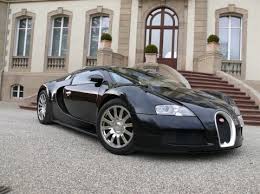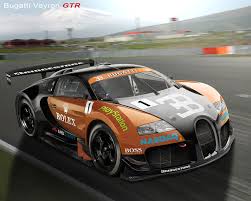You should be happy to know Iron Man 2 more or less wins its battle with "sequelitis," managing to successfully squeeze a hodgepodge of storylines and characters into one two-hour adventure while still keeping the narrative focus sharply on Tony Stark (played once again with unbridled aplomb by Robert Downey, Jr.). Iron Man 2 doesn't always successfully balance all of these moving parts, but considering how wildly it could have gone off the rails (think Schumacher's Batman sequels), it's a significant and highly entertaining accomplishment on the part of Marvel Studios and director Jon Favreau.
Contrary to what AC/DC says – the band of choice in the Iron Man films – hell is a bad place to be, especially if you're Tony Stark. In many ways, Iron Man 2 is an argument for a superhero maintaining his/her secret identity. Tony is definitely paying the piper for his glib declaration at the end of the first movie that he is Iron Man. Now, six months later, the U.S. government wants his tech, as does Stark's rival Justin Hammer (Sam Rockwell, playing him as Tony's villainous doppelganger), who has succeeded Tony as the U.S. military's top weapons manufacturer. Tony is more arrogant than ever, and his ego -- to swipe a line from Top Gun -- is writing checks that his body can't cash.
Tony brazenly shows up both Hammer and a U.S. Senator (Garry Shandling) during a televised hearing. The government doesn't like the idea of a private citizen possessing such potentially destructive technology and wants in on how to make it. What if their enemies developed such tech? Tony dismisses their fears, saying that any such advances are at least 20 years away. But what he doesn't know is that at that moment an old enemy of his family's is hard at work in Russia on his own version of Stark Industries' arc technology.
That enemy is Ivan Vanko (Mickey Rourke), the son of a Russian scientist who was once business colleagues with Tony's dad Howard Stark (Mad Men's John Slattery, as a sort of cross between Howard Hughes and Walt Disney). Ivan, who is never referred to as Whiplash during the film, blames the Starks for the suffering his family endured during the Cold War and now wants Tony to pay for it. Ivan is also a scientist – albeit one who has spent nearly two decades in a gulag and is now badass enough that he can kill professionally trained goons with his bare hands – who has developed his own makeshift variation of the Iron Man tech. Vanko is essentially a cross between the comics' Crimson Dynamo and Whiplash, but this composite character approach succeeds in creating a villain who is visually arresting and legitimately complements Tony's story arc. Vanko's schemes eventually fold into those of Justin Hammer, and he's soon brought stateside to aid the evil industrialist.
Meanwhile, Tony is dealing privately with a very distressing personal matter, one which colors all his dealings with both his assistant Pepper Potts (Gwyneth Paltrow) and pal Col. James "Rhodey" Rhodes (Don Cheadle, succeeding and surpassing predecessor Terrence Howard). Both of them have had it with Tony's capricious and often careless ways, which grow even worse when fueled by alcohol. Rhodey's friendship with Tony is in particularly bad shape, as Rhodey also serves as the U.S. military's liaison to its private weapons contractor, Hammer. Tony, the country's greatest hero, has become erratic, egotistical, and is sometimes inebriated. He's just too much of a wild card now and isn't conducting himself as America's protector should. Tony may have one last ally left in S.H.I.E.L.D. director Col. Nick Fury (Samuel L. Jackson), who is actively recruiting him to join his Avenger initiative. And did we mention that Tony also has a new assistant, sexy redhead Natalie Rushman (Scarlett Johansson), who as we all know is far more than she seems. OK, she's Black Widow, but I won't get into more detail than that!
As you can tell from that lengthy plot summary, there is a lot going on in Iron Man 2, perhaps too much so at times, but damn if you're not going to have a sustained nerdgasm for two hours while watching this movie. With each passing reference to or obvious set-up for The Avengers, and there are several of them beyond just the inclusion of Black Widow and Nick Fury, you can feel the butterflies stirring in your belly: "Oh, my God. It's really happening! We're really going to see Iron Man, Captain America and Thor all sharing the screen a couple of summers from now." Those unfamiliar with the Avengers will likely find Iron Man 2 overstuffed; indeed, the film's midsection is a bit flabby, a very talky stretch where I'm sure more than one fanboy will grow impatient waiting for something to blow up. There is one particular scene – Tony's birthday party, that's all we'll say – where you'll either be on-board with how Favreau, screenwriter Justin Theroux and his cast handle it, or you'll find it too long, arbitrary or contrived. It's a major turning point for two main characters, but it did drag on a wee bit.
The filmmakers' loose style of making the Iron Man films may be too evident at times, especially during the aforementioned sequence. Steven Soderbergh may be able to wing it in the Ocean's films, but that's a dangerous method for a movie like Iron Man 2 to adopt. I understand wanting to maintain a similar breezy tone to the relatively happy-go-lucky original film, but in a story such as this -- with so many subplots and spin-off seeds to be sewn -- the filmmakers could have been a bit more vigilant and disciplined in their execution. As the saying goes, sometimes too much of anything isn't always a good thing. It can slow narrative momentum down or simply amount to clutter.



